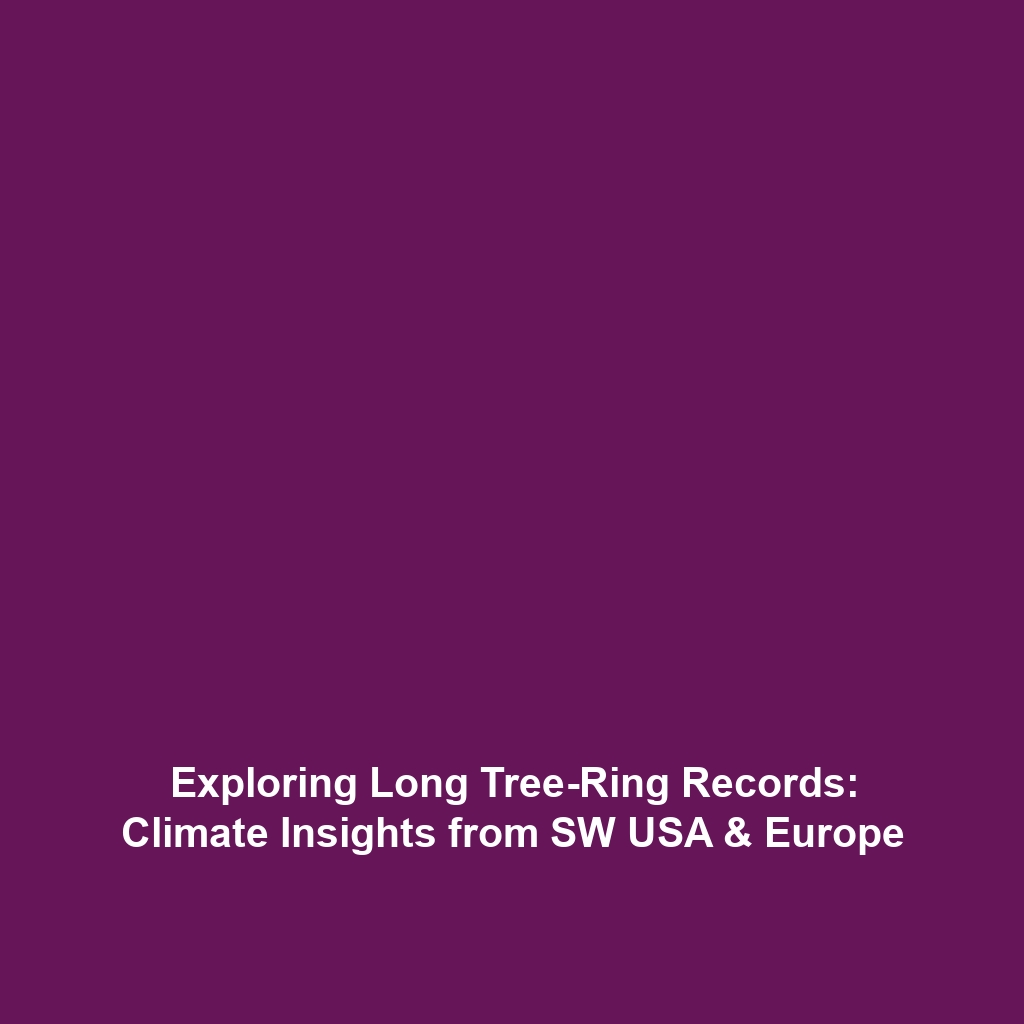Examples of Long Tree-Ring Records from the American Southwest and European Forests
Introduction
Long tree-ring records, also known as dendrochronology, represent an invaluable resource for understanding climate history. In regions like the American Southwest and European forests, these records provide insights into past climate conditions, aiding in the reconstruction of climate events over centuries. By analyzing the growth patterns of trees, scientists can derive significant data regarding droughts, temperature fluctuations, and even atmospheric carbon levels. This article delves into the importance of these tree-ring records in enriching our understanding of historical climate shifts and their repercussions on ecosystems and human societies.
Key Concepts
Dendrochronology operates on the principle that trees produce annual growth rings, which vary in width based on environmental conditions. Key concepts related to long tree-ring records include:
- Annual Growth Rings: Each ring represents one year of growth; wider rings typically indicate favorable growth conditions, while narrower rings suggest stress.
- Chronology Builds: Scientists can build chronologies that span thousands of years by cross-dating tree rings from different regions.
- Climate Proxies: Tree-ring data serve as climate proxies, offering indirect evidence of past climate conditions.
These principles form the foundation of dendroclimatology, linking tree growth patterns directly to climatic events, thus integrating long tree-ring records into the broader context of climate history.
Applications and Real-World Uses
The applications of long tree-ring records in climate history are extensive, particularly in understanding historical climate patterns and predicting future changes. Significant uses include:
- Climate Reconstruction: Long tree-ring records help reconstruct past climates, providing context for current climate change.
- Forest Management: Data from tree rings inform sustainable forestry practices by revealing how trees respond to environmental stresses.
- Archaeological Insights: Dendrochronology assists in dating wooden artifacts, connecting human activities with historical climate conditions.
Understanding how long tree-ring records from the Southwest and European forests contribute to climate history enables better strategies for environmental conservation.
Current Challenges
Despite their significance, there are several challenges in studying long tree-ring records which include:
- Natural Disturbances: Events like wildfires and insect infestations can obscure historical patterns.
- Climate Change: Rapid changes in climate can alter tree growth patterns, complicating historical comparisons.
- Geographical Variability: Differences in regional climate conditions can limit the applicability of tree-ring data across diverse areas.
Addressing the challenges of studying long tree-ring records is crucial to advancing our understanding of climate history.
Future Research and Innovations
Ongoing research into dendrochronology promises to enhance our understanding of climate history significantly. Innovations include:
- Advanced Imaging Techniques: Technologies such as x-ray densitometry allow for more precise measurement of tree-ring characteristics.
- Genetic Studies: Exploring the genetic responses of tree species can reveal connections between climate adaptability and tree growth.
- Big Data Analytics: Utilizing large datasets and machine learning models offers opportunities for predictive climate modeling based on tree-ring records.
These advancements threaten not only to improve the accuracy of climate reconstructions but also to inform future conservation efforts.
Conclusion
Long tree-ring records from the American Southwest and European forests play a pivotal role in enhancing our understanding of climate history. By providing concrete data on past climatic conditions, these records inform current climate models and guide future environmental policies. To support ongoing research and ensure sustainable future practices, it is imperative to recognize the significance of these records. For further reading on climate history, explore additional resources such as The Impact of Climate on Human Civilizations and The Role of Dendrochronology in Environmental Studies.
